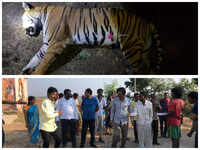Doctors at Delhi hospital perform angioplasty in one-third time of internationally-accepted protocol
PTI | Updated: Nov 4, 2018, 20:19 ISTHighlights
- Doctors claimed to have performed an emergency angioplasty on a 42-year-old man within 34 minutes of him being brought to the hospital.
- It reduces the door-to-balloon turn-around-time (TAT) of 90 minutes according to internationally-accepted protocol.
- Door-to-balloon time refers to the time taken for heart attack victims to receive balloon angioplasty treatment from the moment they walk through the hospital doors.
 (Representaive image)
(Representaive image)NEW DELHI: Doctors of a hospital here claimed to have performed an emergency angioplasty on a 42-year-old man within 34 minutes of him being brought to the hospital, significantly reducing the door-to-balloon turn-around-time (TAT) of 90 minutes according to internationally-accepted protocol.
Door-to-balloon time refers to the time taken for heart attack victims to receive balloon angioplasty treatment from the moment they walk through the hospital doors.
Chennai resident Santosh Kumar, who was on a business trip to the national capital, collapsed after complaining of chest pain on October 9.
He was rushed to BLK Super Speciality Hospital, where he was detected that he had developed an extensive anterior myocardial infarction, the most serious cardiac emergency as it can lead to cardiac arrest or severe damage to the heart, Navneet Singh, Director, Emergency and Acute Care at BLK Heart Centre, said.
He was immediately shifted to the cath lab under care of Dr Neeraj Bhalla, senior consultant and Director, Cardiology.
"A stent was placed to keep the artery flowing within a quick turnaround time of 16 minutes. The patient responded very well to immediate and efficient intervention," Dr Bhalla said.
He said the total door-to-angioplasty time was 34 minutes which was much lesser than the international protocols of around 90 minutes.
According to Bhalla chances to save a patient are usually very high if proper medical attention is provided within an hour of the event.
Over 30 lakh people suffer from heart attack in India every year and many don't survive. One of the biggest reasons for non-survival is non-availability of timely treatment.
Door-to-balloon time refers to the time taken for heart attack victims to receive balloon angioplasty treatment from the moment they walk through the hospital doors.
Chennai resident Santosh Kumar, who was on a business trip to the national capital, collapsed after complaining of chest pain on October 9.
He was rushed to BLK Super Speciality Hospital, where he was detected that he had developed an extensive anterior myocardial infarction, the most serious cardiac emergency as it can lead to cardiac arrest or severe damage to the heart, Navneet Singh, Director, Emergency and Acute Care at BLK Heart Centre, said.
He was immediately shifted to the cath lab under care of Dr Neeraj Bhalla, senior consultant and Director, Cardiology.
"A stent was placed to keep the artery flowing within a quick turnaround time of 16 minutes. The patient responded very well to immediate and efficient intervention," Dr Bhalla said.
He said the total door-to-angioplasty time was 34 minutes which was much lesser than the international protocols of around 90 minutes.
According to Bhalla chances to save a patient are usually very high if proper medical attention is provided within an hour of the event.
Over 30 lakh people suffer from heart attack in India every year and many don't survive. One of the biggest reasons for non-survival is non-availability of timely treatment.








































All Comments ()+^ Back to Top
Refrain from posting comments that are obscene, defamatory or inflammatory, and do not indulge in personal attacks, name calling or inciting hatred against any community. Help us delete comments that do not follow these guidelines by marking them offensive. Let's work together to keep the conversation civil.
HIDE